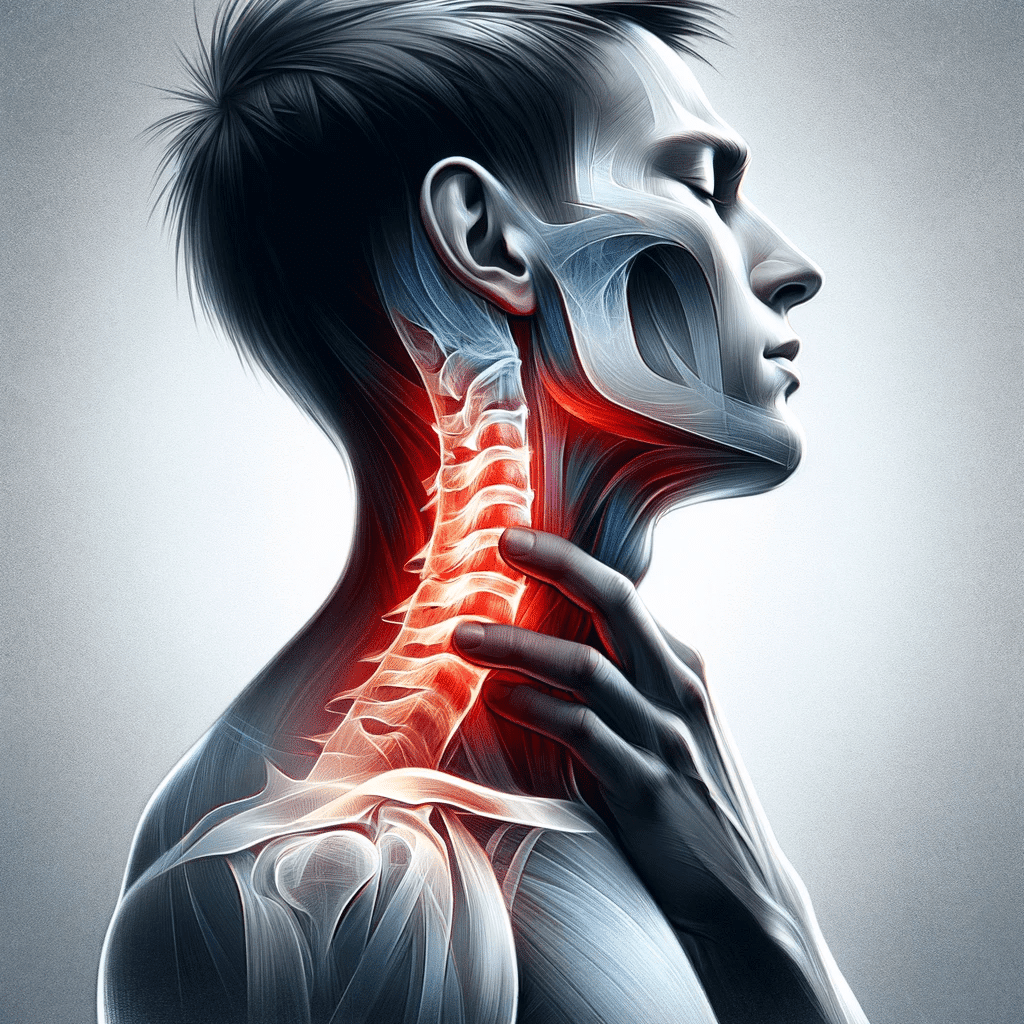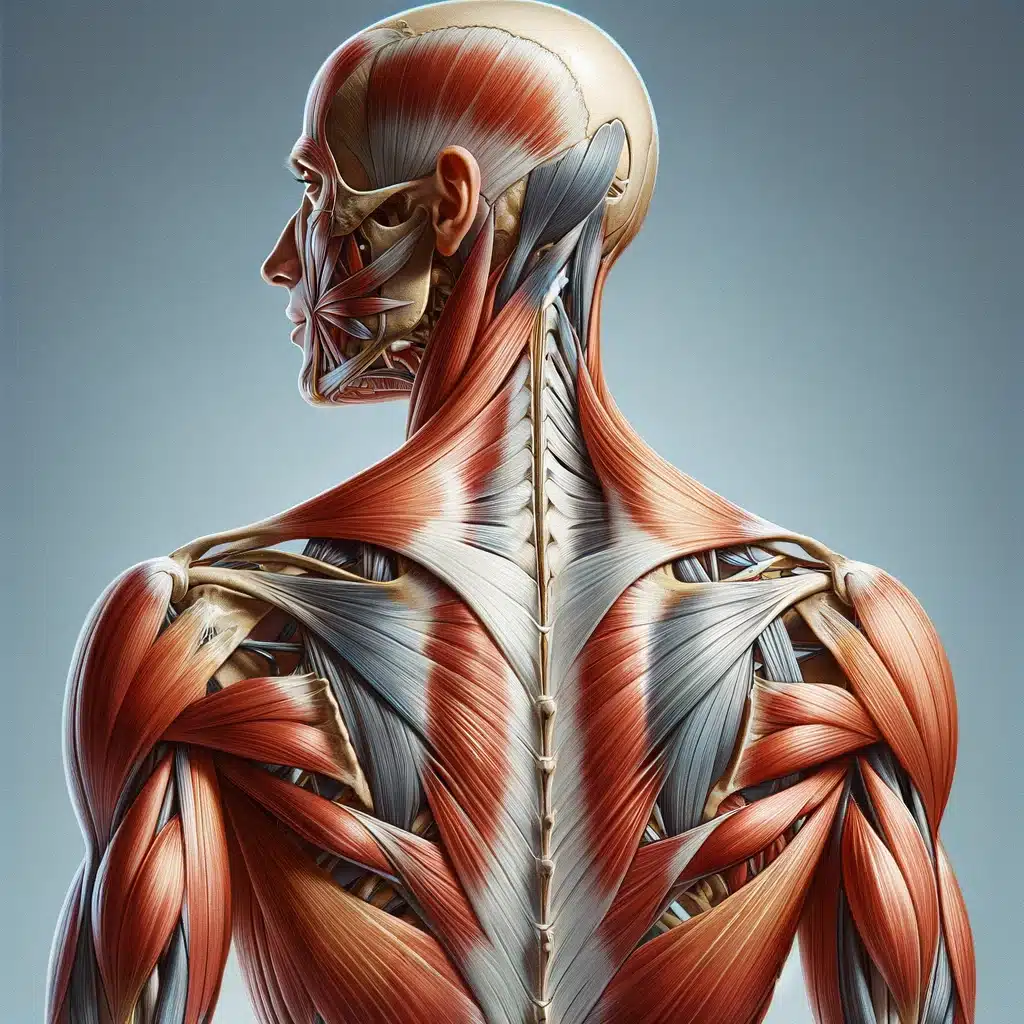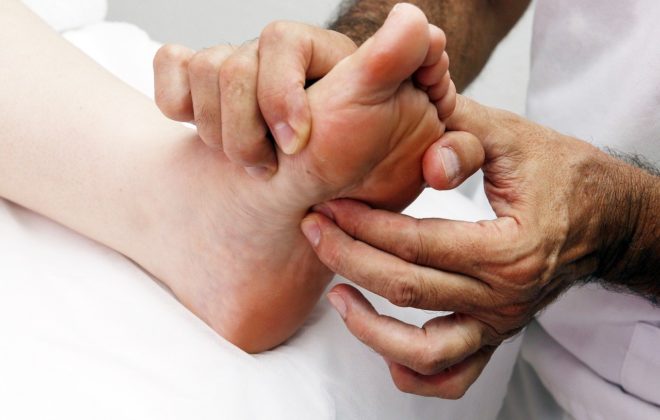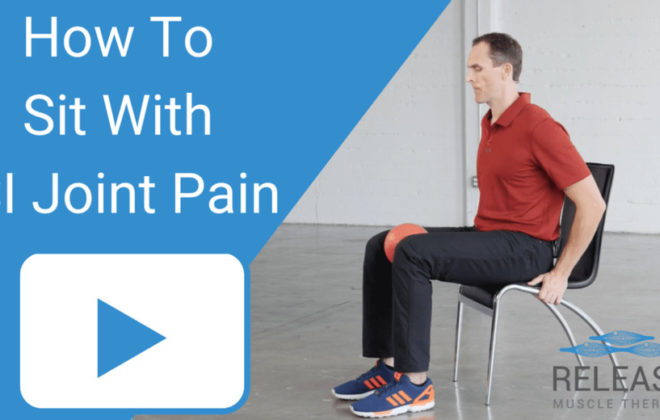Trigger Points In The Neck – What Is Their Role In Neck Pain?

Are you feeling that nagging ache in your neck again? It’s no secret that neck pain can turn even the simplest tasks into daunting challenges. But what if I told you that the source of this discomfort might be tiny sensitive points in your muscles, known as trigger points? These pesky spots aren’t just painful; they can also send pain to other parts of your body, making it hard to pinpoint where it all starts.
Trigger points are a bit mysterious—some experts debate their exact nature—but these sensitive areas within your muscles play a surprisingly big role in neck pain. In fact, research suggests that properly addressing trigger points could lead to significant relief from those relentless neck woes.
This blog post will guide you through understanding what trigger points are and how they may be contributing to your discomfort. We’ll explore ways to identify them and discuss effective treatments so you can say goodbye to that stubborn neck pain.
Ready for some relief? Keep reading for insights and solutions tailored just for you!
Key Takeaways
- Trigger points are small, painful points in muscles that can cause neck pain and limit movement. They may also send pain to other body parts.
- Treatments for neck trigger points include manual therapies like neuromuscular therapy and exercises designed to relieve muscle tension.
- Scientific research supports the effectiveness of treating trigger points with specific therapies to reduce pain and improve function in patients with neck issues.
- Methods used to identify trigger points involve palpation, observing referred pain patterns, using imaging technologies, and noting response to treatment.
- Maintaining good posture, engaging in gentle stretching exercises regularly, and using heat or cold therapy can help manage trigger point discomfort at home.
Understanding Trigger Points

Understanding trigger points is crucial, as they are often at the heart of muscle pain in various parts of the body, including the neck. These sensitive spots in your muscles can cause significant discomfort and are linked to an array of symptoms that may affect your daily life.
Let’s delve into what these enigmatic points really are and explore the debate that surrounds them.
Definition and characteristics
Trigger points are small, highly irritable spots within a band of muscle that can cause significant contribution to neck pain. They often feel like taut muscles or nodules to the touch and can trigger sharp, shooting pains when pressed.
These sensitive areas can refer discomfort to other parts of your body and contribute to chronic myofascial pain syndrome.
Characterized by their ability to generate patterns of referred pain, trigger points may lay dormant as latent TrPs or be actively painful without direct pressure. Active trigger points in the upper trapezius and levator scapulae muscles frequently cause tension headaches and restrict motion in the cervical spine.
This hypersensitivity in muscle tissue results from factors such as poor posture, overuse, or injury creating stress on muscle fibers.
The controversy surrounding trigger points
Despite their widespread recognition among healthcare practitioners, trigger points—and how they should be treated—spark debate in medical circles. Some experts argue that the science behind trigger points isn’t solid enough, claiming more research is needed to understand exactly how these sensitive spots work within muscle tissue.
They question whether other underlying issues might actually cause the pain attributed to trigger points.
On the other side of the argument, many therapists and doctors see consistent results from treating trigger points directly. Patients often report immediate relief after treatments like manual therapy or dry needling, which target these painful nodules.
This hands-on evidence supports the idea that trigger points are not only real but also an important factor in musculoskeletal pain management. As treatments evolve and new studies emerge, this ongoing controversy continues to fuel discussions on the best ways to help sufferers of chronic neck pain find much-needed comfort and improved mobility.
The Role of Trigger Points in Neck Pain

Trigger points in the neck are notorious for causing discomfort and restricting movement, as they often refer pain to seemingly unrelated areas. Unveiling their role in neck pain is crucial for both understanding your symptoms and seeking effective treatment.
Common trigger points in the neck
Trigger points in your neck can lead to discomfort and affect your daily activities. Identifying common trigger points helps you understand the source of neck pain and how to address it.
- The trapezius muscle, situated at the back of your neck and shoulders, is a common site for trigger points. These knots often cause pain that spreads to areas like the head, jaw, or upper back.
- Levator scapulae trigger points manifest around the shoulder blade and can generate a sharp pain when turning your head or lifting your arm.
- Sternocleidomastoid (SCM) trigger points are found along the side of your neck. They are notorious for causing headaches, dizziness, and even disturbances in vision when aggravated.
- Suboccipital muscles located at the base of your skull harbor trigger points that might give rise to ‘tension-type’ headaches or a feeling of tightness across the forehead.
- Scalene muscles trigger points lead to deep-seated neck pain that can cause breathing difficulties and send tingling sensations down your arms.
- Trigger points situated near the collarbone can be linked with breathing difficulties or chest pain that often mimics angina.
The trapezius and levator scapulae trigger points
The trapezius muscle, spanning your upper back and neck, can develop sensitive areas that cause sharp pain or a dull ache. These spots are known as trapezius trigger points and they often refer discomfort to the base of your skull, shoulders, and even down your arms.
Levator scapulae trigger points sit deeper near the top corners of your shoulder blades and play a tricky role in neck stiffness. You might feel intense pain when turning your head or trying to look upwards.
Physical therapy techniques focus on these specific trigger points for pain relief. A skilled physical therapist applies pressure or uses myofascial release methods to alleviate the tension found within these muscles.
This targeted treatment aims at decreasing pain while restoring flexibility in the affected muscle group so you can move more freely again. Now let’s explore another common culprit of neck strain: the sternocleidomastoid trigger points.
The sternocleidomastoid trigger points
Your neck might often feel tense or sore, and this can be due to the sternocleidomastoid trigger points. These are sensitive areas found in your neck muscles that can cause sharp pain when they’re pressed.
The sternocleidomastoid muscle runs from behind your ear down to your collarbone, and it helps you turn your head from side to side.
Finding these trigger points can be tricky because the pain they produce often shows up in different places like the back of your head, eyes, ears or even sinuses. By applying gentle pressure and massaging these spots, you may alleviate some of the discomfort.
Be mindful not to overdo it; too much pressure could potentially lead to more soreness or a muscle spasm.
Identifying Trigger Points in the Neck
Recognizing these hotspots of pain is crucial, as their presence can be a key factor in your neck discomfort; learn to detect them effectively for better management of your symptoms.
Symptoms of trigger point pain
Trigger point pain in the neck may not always be straightforward to identify. Recognizing the symptoms is crucial for addressing this type of discomfort early on.
- Sharp, stabbing pains: These acute sensations often occur when pressure is applied to a trigger point.
- Deep ache: You might feel a persistent, gnawing discomfort that persists even when you’re not moving.
- Referred pain: The pain may radiate beyond the actual trigger point, sometimes leading to headaches or upper back pain.
- Limited range of motion: Stiffness and limitation in how far you can move your head or shoulders could be a sign.
- Tenderness to touch: Applying slight pressure over the affected area can result in significant tenderness or even sharp pain.
- Muscle weakness: Over time, the muscle with the trigger point may feel weaker and less functional.
- Twitch response: Trigger points can cause a muscle fiber to twitch involuntarily when palpated or examined.
- Sensations of numbness: Numb areas around the neck and shoulders are sometimes associated with trigger points.
- Pain patterns during specific activities: Certain movements may provoke distinctive pain patterns linked to underlying trigger points.
Diagnostic approaches
A range of diagnostic methods are used to locate these problematic areas.
- Palpation: Your doctor applies pressure with their fingers to feel for tender knots in your muscles. This hands-on technique helps find hyperirritable spots that often indicate the presence of a trigger point.
- Physical exam: A thorough examination is performed, where you’ll be asked about your pain and medical history. The exam includes observing your posture, neck mobility, and any muscle twitching or weakness.
- Pain patterns: Doctors look for specific referred pain patterns that align with known trigger points. If the pain in your neck extends to other areas in predictable ways, this can signal the location of trigger points.
- Local twitch response: On finding a potential trigger point during palpation, applying swift pressure might elicit a local twitch in the muscle, providing further confirmation.
- Use of imaging technologies: While not always necessary, ultrasound or MRI can be utilized to rule out other conditions and sometimes visualize dense areas within muscles indicative of trigger points.
- Response to treatment: Often, healthcare professionals will employ therapeutic strategies such as applying pressure, stretching exercises or injections. Improvement following these treatments can help confirm the diagnosis of a myofascial trigger point.
The Treatment of Neck Trigger Points
Discover the various therapeutic methods available to target and alleviate neck trigger points, from manual therapies to cutting-edge medical interventions that aim to reduce your discomfort and improve mobility.
Neuromuscular therapy
Neuromuscular therapy stands out as a specialized form of manual massage aimed at treating trigger points in your neck. This hands-on technique involves alternating levels of concentrated pressure on the areas of muscle spasm with the help of fingers, knuckles, or elbows to increase blood flow and reduce pain.
Skilled practitioners apply these techniques to improve skeletal muscle function by relieving tension in the connective tissue.
This therapy is not just about pressure; it requires an understanding of the nervous system’s role in muscle pain. Therapists work carefully to release trigger points that are tender and can lead to persistent pain and stiffness.
The treatment may involve specific exercises tailored to stretch and strengthen muscles around your spine, fostering better postural habits—essential for overcoming chronic neck issues.
After addressing trigger-point sensitivity through neuromuscular therapy, you may next explore how simple exercises can further aid in maintaining a pain-free neck.
Trigger-point exercises
Trigger-point exercises can alleviate the pain caused by tight muscles in your neck. These specific movements aim to reduce tension and improve muscle function.
- Begin with gentle stretching: Slowly move your head and neck through their full range of motion to increase flexibility.
- Apply moderate pressure: Use your fingers or a massage tool to press firmly on identified trigger points for relief.
- Include isometric neck exercises: Tense your neck muscles without moving your head, hold for several seconds, and release to decrease pain.
- Perform self-massage techniques: Rub the affected areas in your neck using circular motions to help treat trigger points.
- Incorporate muscle energy practices: Contract and relax your neck muscles against light resistance provided by your hand or a device.
- Practice frequent repetitions: Work on these exercises several times per day to maintain muscle relaxation.
- Consider heat application: Warmth can help relax muscular knots; apply a heat pack before doing trigger point exercises.
- Focus on breathing deeply: Proper breathing helps decrease tension in the muscles while you perform these exercises.
- Maintain good posture: Sitting upright with proper alignment aids in reducing strain on back and side muscles of the neck.
- Utilize movement variation: Alternate between different stretches and exercises to target all relevant areas effectively.
Scientific Evidence?
Scientific evidence plays a critical role in validating the treatment of neck trigger points, as it ensures that therapeutic approaches are effective and based on factual data. Research has delved into various modalities to establish their efficacy in alleviating pain caused by these specific muscular knots.
Evidence supporting the treatment of neck trigger points
Research studies have confirmed that treating neck trigger points can significantly reduce pain and improve muscle function. Trigger point therapy, including injections and exercises, is grounded in scientific understanding of muscle physiology.
These treatments focus on the precise locations where pain originates, aiming to relieve pressure and alleviate discomfort. Clinical trials show patients experiencing less neck pain after receiving trigger point injections compared to those who did not receive treatment.
Experts also endorse specific exercises for their ability to stretch and strengthen muscles affected by trigger points. These exercises are designed to break down knots within the muscle fibers, promoting healing and preventing future discomfort.
With consistent application of these therapeutic techniques, many patients report lasting relief from chronic neck pain associated with myofascial pain syndrome, demonstrating the effectiveness of targeted intervention at these sensitive spots in the muscles.
Conclusion
Taking care of your neck is key to overall well-being. Understanding trigger points in the neck helps target the source of pain effectively. With knowledge and the right approach, you can alleviate discomfort caused by these sensitive spots.
Remember, a combination of treatments tailored to your needs may offer relief from stubborn neck pain linked to trigger points. Stay proactive in managing your health for better movement and comfort every day.
Sam Visnic
Most Popular Posts
Categories
- Deep Gluteal Pain Syndrome (8)
- Deltoids (2)
- Foam Rolling (2)
- Glutes (9)
- Hamstrings (5)
- Hypnosis for Pain (3)
- Lats (2)
- Levator Scapulae (4)
- Lifestyle (8)
- Massage Therapy (39)
- Mobility (21)
- Movement and Exercise (19)
- Muscles (22)
- Nutrition (2)
- Obliques (1)
- Pain (25)
- Pectorals (3)
- Piriformis (3)
- Plantar Fasciitis (11)
- Psoas (11)
- Quadratus Lumborum (3)
- Quadriceps (2)
- Rhomboids (3)
- Sciatica (1)
- Serratus Anterior (1)
- SI Joint (14)
- Sternocleidomastoid (1)
- Stretching (18)
- Subscapularis (1)
- TMJ (2)
- Trapezius (1)
- Uncategorized (12)










